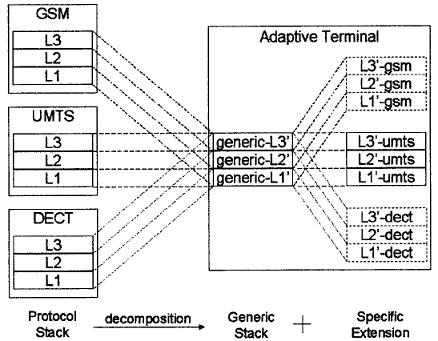
Isfahan University of Technology
Protocols and Network Aspects of SDR
H. Narimani
course project spring 2007
| |
| Home |
| Refrences |
| Relevant Sites and Projects |
| About Us |
| Adaptive Protocols | |
Adaptive protocols consist, in principle, of a generic protocol layer that implements a set of common protocol functions; and of a second part that implements a customized extension (to this ‘generic, or common, protocol’) and provides the protocol functions required to bridge the differences between the generic and standardized protocols.The process for building such an adaptive framework starts with the determination of the common elements needed within the protocols that are to be included in the framework; this is followed by their implementation in the generic part of the structure. Meanwhile, the noncommon, or protocol specific, elements have to be combined and implemented in different, protocol specific, extensions. These extensions will eventually complement the generic/ common implementations. Adaptive protocol stacks are indeed a viable approach to generic protocol stack definition and for tackling configurability in software (defined) radio systems. The major shortcoming appears when very different or diverse protocol stacks are to be implemented within one adaptive protocol framework. In such a situation the generic parts of the framework are bound to shrink, and the different extensions required become too extensive to provide a real advantage over discrete protocol stack implementations.
|
|
 |
|
see also : "Design of Generic and Adaptive Protocol Software (DGAPS)" " MODULAR LINK LAYER FUNCTIONS OF A GENERIC PROTOCOL STACK FOR FUTURE WIRELESS NETWORKS" |
|

